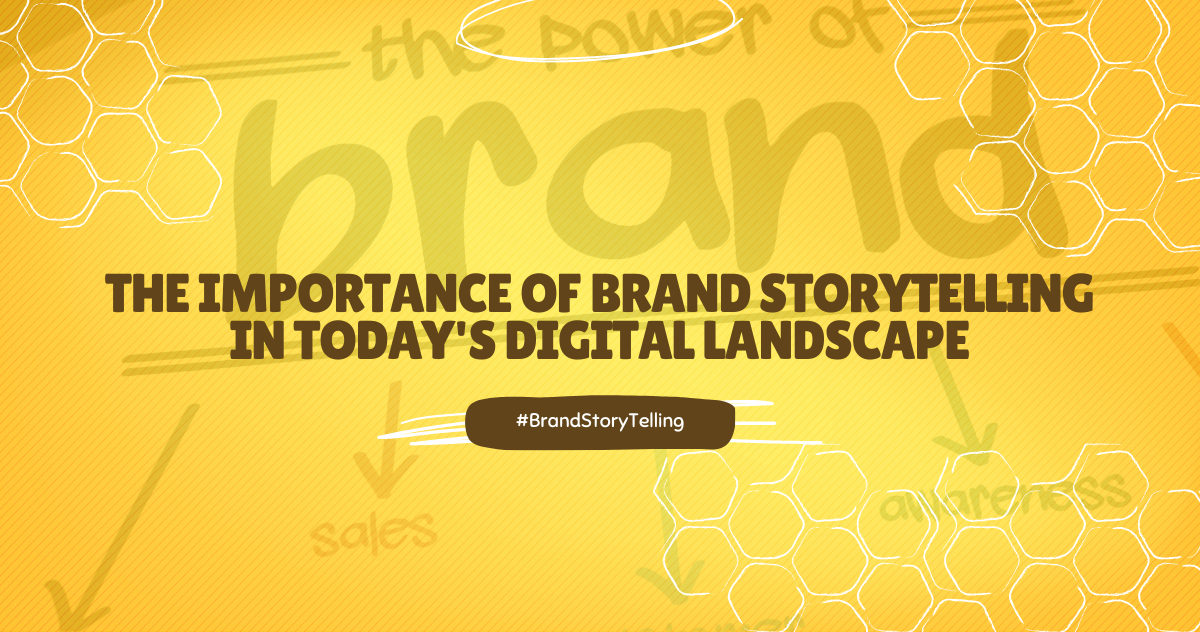It’s no secret that storytelling has been a part of human culture since the dawn of time, with our ancestors using it to preserve history, share knowledge, and entertain one another. Fast forward to today, and storytelling is still very much alive, but it has evolved into a crucial component of successful marketing campaigns.
So, why does brand storytelling matter so much in the digital landscape?
The Emotional Connection
First and foremost, storytelling helps forge an emotional connection between a brand and its audience. People are wired to react to stories that evoke emotion, and if your brand can tug at their heartstrings, they’re more likely to remember you and become loyal customers.
Remember the legendary 1984 Apple ad that introduced the Macintosh computer? The ad captured viewers’ emotions and imagination, leaving a lasting impression on the minds of millions.
Stand Out in a Crowded Market
We live in a world where information is abundant, and attention spans are shorter than ever. The digital landscape is a cacophony of messages and images, making it harder for brands to break through the noise. By weaving a captivating narrative, you can differentiate yourself from competitors and make a memorable impact on your target audience.
For example, Dove’s Real Beauty campaign has resonated with consumers because it tells authentic stories that challenge traditional beauty standards.
Building Trust and Credibility
In today’s digital landscape, trust and credibility are like gold dust. With so many brands vying for attention, consumers are increasingly skeptical of marketing messages. Through brand storytelling, you can show your audience the “human” side of your company and establish trust by conveying your values, mission, and purpose.
Consider Patagonia’s commitment to environmental conservation; they consistently share stories that showcase their dedication to the cause, fostering trust among their customers.
Engaging and Shareable Content
Let’s face it: people love sharing content that strikes a chord with them. By crafting an engaging story, you not only pique your audience’s interest but also increase the likelihood of your content being shared on social media platforms.
Remember the Old Spice “The Man Your Man Could Smell Like” campaign? The quirky and humorous storytelling turned the ad into a viral sensation, reaching millions of viewers and sparking countless parodies.
Supporting SEO Efforts
Although not directly related to storytelling, a well-crafted narrative can boost your search engine optimization (SEO) efforts. Engaging content is more likely to be shared, earning you valuable backlinks and increasing your website’s visibility on search engines. Moreover, a good story can help you naturally incorporate relevant keywords, improving your content’s SEO performance.
Now that we’ve navigated the reasons why brand storytelling is essential in today’s digital landscape, let’s look at a few tips to help you craft a captivating narrative:
- Know Your Audience: Before you set sail on your storytelling adventure, take the time to understand your target audience. Determine their needs, desires, and pain points, and tailor your story to resonate with them on an emotional level.
- Be Authentic: In the digital age, authenticity is the name of the game. Avoid over-exaggeration or outright fabrication. Instead, be honest, transparent, and true to your brand’s identity. This will foster trust and credibility among your audience.
- Show, Don’t Tell: A cardinal rule of storytelling is to “show, don’t tell.” Use descriptive language, vivid imagery, and evocative examples to paint a picture in your audience’s mind, rather than merely stating facts. This will make your story more engaging and memorable.
- Develop a Strong Narrative Arc: A great story has a clear beginning, middle, and end. Ensure that your brand story follows a logical progression, with a compelling introduction, an intriguing buildup, and a satisfying conclusion. This structure will keep your audience hooked and eager to learn more about your brand.
- Use a Mix of Media: In the digital world, you’re not limited to just words on a page. Take advantage of various media formats, such as images, videos, podcasts, and infographics, to enrich your storytelling experience. A well-placed visual or audio element can add depth and emotion to your narrative.
- Incorporate User-Generated Content: Don’t be shy about involving your audience in your storytelling. Encourage them to share their experiences with your brand and use their stories to create relatable content. This not only adds credibility to your narrative but also fosters a sense of community among your customers.
- Be Consistent Across Channels: Finally, ensure that your storytelling remains consistent across all your marketing channels. Whether it’s your website, social media, or email campaigns, your brand story should be cohesive and aligned with your overall marketing strategy.
Brand storytelling is a powerful tool in today’s digital landscape, allowing you to forge emotional connections, stand out in a crowded market, build trust and credibility, and create engaging, shareable content. By following the tips above, you can craft a captivating narrative that resonates with your audience and propels your brand to new heights.
As we navigate the digital era, brand storytelling emerges as a powerful tool to connect with audiences, and Beespoke excels in this craft. Our team specializes in translating your brand values and vision into compelling narratives that resonate with your target market. With Beespoke, transform your brand story into a captivating journey that drives engagement, loyalty, and growth.





